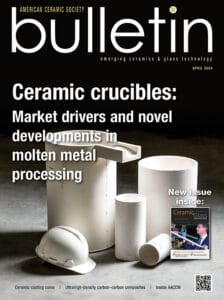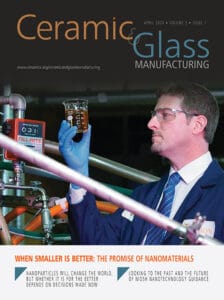 Richard K. Brow is the Deputy Provost for Academic Excellence and Curators’ Distinguished Professor of Ceramic Engineering at Missouri S&T, where he teaches courses on glass science and technology and he studies the relationships between glass composition, structure and properties. He and his colleagues have written over 200 peer-reviewed archival publications and he holds 19 patents on glasses for a variety of engineering applications. Brow has served as president of the American Ceramic Society and presided over the 25th International Congress on Glass in Boston in 2019.
Richard K. Brow is the Deputy Provost for Academic Excellence and Curators’ Distinguished Professor of Ceramic Engineering at Missouri S&T, where he teaches courses on glass science and technology and he studies the relationships between glass composition, structure and properties. He and his colleagues have written over 200 peer-reviewed archival publications and he holds 19 patents on glasses for a variety of engineering applications. Brow has served as president of the American Ceramic Society and presided over the 25th International Congress on Glass in Boston in 2019.
Presentation title: From University Research to Clinical Use- A Biomedical Glass Story
Abstract: Two remarkable features of oxide glasses are the ability to both tailor their compositions for specific applications and to form them into products that are optimized for those applications. In this talk, we will review how a faculty member and his students at Missouri S&T used those two features to develop a unique glass product to treat inoperable liver cancer and we will describe how Mo-Sci, Inc. (Rolla, MO), the company that was started to manufacture the first materials, became a worldwide leader in bioactive glass products, helping tens of thousands of people along the way. We will review the materials science and engineering behind that first product, micron-sized glass spheres doped with yttrium that could deliver therapeutic radioactive doses directly to a tumor, and how the subsequent development of new compositions led to the discovery of a new family of soluble borate bioactive glasses that can regenerate tissues and help heal wounds. Along the way, the researchers involved in these studies gained a better understanding of how glasses react in aqueous environments, including in the body, and this understanding helped lead to the development of other materials, including glasses that are so chemically stable that they are being used as hosts for radioactive wastes. The development of these glasses like these into useful products was made possible because of the synergistic partnership between federal funding agencies, who sponsored much of the initial work, Missouri S&T, where faculty and students made the initial discoveries, and Mo-Sci, where those discoveries led to the products now used by patients around the world.
Subscribe to Ceramic Tech Today

Don’t miss the latest ceramic and glass materials news. Receive the CTT newsletter to your email three times a week by subscribing at this link.
Subscribe to Ceramic & Glass Manufacturing Weekly

Don’t miss the latest ceramic and glass business news. Receive the C&GM Weekly newsletter to your email every Monday by subscribing at this link.


